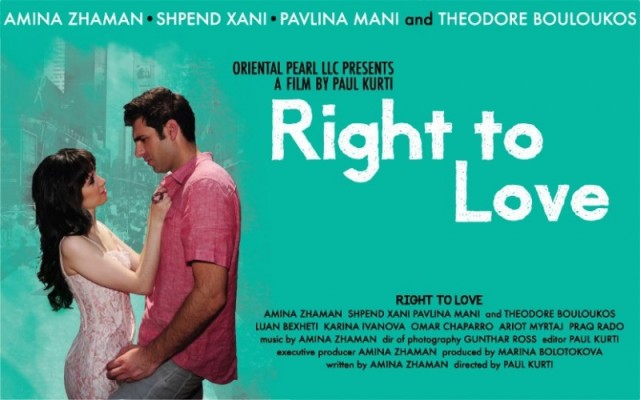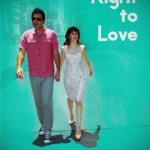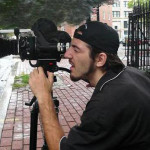Interviewed by Ermira Babamusta, New York
How did the film come together?
I received an email from Amina Zhaman, who had seen some of my short films on the web. She had written a screenplay and the music for a feature film, a story that was very personal to her. One of the lead characters in the film is an Albanian-American and since my background is also from Albania, I had a better understanding of the culture. Since we lived in different cities, we Skyped for a couple of months discussing the script, ideas and logistics of filming. When we felt that the time was right, we met up in New York, put together a great cast and crew and soon after we started filming.
What is the film about?
The film tells the story of Amina (Amina Zhaman), a Circassian Muslim actress, who moves to New York with ambitions of performing on Broadway. She meets and falls in love with Tony (Shpend Xani), an Albanian catholic man. However, his disapproving family goes to great length to oppose their relationship.
On the surface it seems like a modern Romeo and Juliette story, but there are many elements that make this story special and unique. The film raises questions of – how much are we willing to sacrifice to follow our dreams? Would we sacrifice our families, our careers, our love? Why do some people continue judging others based on their background, nationality and religion? Is this a mass mentality or is it different in each individual based on their past experiences? Will certain prejudices ever change?
The stories that interest me are the ones that don’t give answers but rise questions. I try to analyze a story from all characters’ points of view, even the unpopular ones. It’s up to the audience to formulate opinions based on what is presented to them. If the movie starts conversations then I have been successful.
Where was the movie shot?
The movie was shot in New York during the summer of 2012. It took roughly 2 months of preproduction, 6 weeks of filming and 5 months to edit. New York is the city where the lead character comes with dreams of performing on Broadway, and is also a city that has been built on the dreams and hard work of many generations of immigrants from all sorts of backgrounds and nationalities. It embraces perfectly the spirit of the film.
Tell us about casting for the film.
Amina Zhaman wrote the story and also plays the lead character. We auditioned a few people for the part of Tony and when we got to Shpend Xani, we felt that he would be a great choice for the part. Shpend’s portrayal is different from Tony in the script, he has a much more intense presence on screen. However, I thought that was a very interesting take on the character and I spent plenty of time with Shpend working and shaping Tony.
Theodore Buloukos was casted in the role of John Fisher, the producer who gives Amina her big break. He is a very experienced and professional actor and it was a pleasure to work with him. Other actors include Luan Bexheti, Omar Chaparro, Ariot Myrtaj, Karina Ivanova and many more. Because it was an independent film shot on limited time and budget, we had little time to for rehearsals. But every actor in the film understood the challenge and brought their best to the screen.
Any particular moments in the movie, which stands out?
The scene when Tony confronts his mother Maviola definitively stands out. I was lucky enough to be able to work with Pavlina Mani, a great actress that I grew up watching and admiring. I think Pavlina Mani and Shpend Xani portray the mother-son relationship in a very powerful and honest way. I think they both relied on their personal background and experience during this scene. It’s an intense scene, where the audience feels both contempt and compassion for Maviola’s character. It was one of the few scenes that I wrote and I’m very proud of the final result.
What is your favorite part of directing?
Up to this day, I don’t think I have not found another thing that I feel as comfortable doing as making films. Directing is like putting together a puzzle, you have to find all the right pieces that will fit the scene and the film. This includes locations, actors, dialogue, camera movement etc. I also believe that filmmaking is about those unexpected and unplanned moments that can happen while filming. It could be an idea, a new sentence, an interesting location etc. A director needs to be able to recognize these moments and somehow use them to the film’s advantage. I enjoy these challenges tremendously. However, as much as I enjoy filming, I think editing is where the magic happens and I always look forward to that.
What else are you working on?
I have written a couple of fiction feature films, and am looking for funding to film them. They tell stories of characters that for various reasons are somehow secluded from society. We all know these people, might be that strange neighbor across the hall that we have never talked to, but I believe that each person has an interesting story worth telling. This is why I am also interested in documentary filmmaking and given the right subject and story would like to film one. My biggest dream though would be to one day make a film with my grandmother.
- Paul Kurti is an Albanian-Canadian filmmaker. The grandson of Albanian actress Tinka Kurti, he grew up with a deep interest in visual forms of expression, including drawing, architecture and film.


